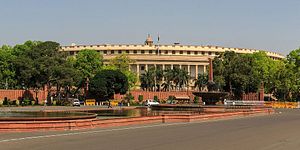On Sunday, the Indian Election Commission announced the schedule for the country’s upcoming general parliamentary elections, which will see more than 800 million Indians head to the polls to fill 543 seats for the Lok Sabha — the lower house of the Indian parliament. The upcoming collection will select members of parliament for the 17th Lok Sabha.
According to the Sunday announcement by India’s chief election commissioner, Sunil Arora, the 2019 general election will take place across seven phases of voting between April 11 and May 19. The tallying of final results will take place on May 23. Voting for the Lok Sabha elections in India uses a first-past-the-post system, where, regardless of the number of candidates contesting a given seat, the candidate to receive the largest number of votes wins. Members of the Lok Sabha are elected to five-year terms.
Each phase of voting will take place on the following dates: April 11, April 18, April 23, April 29, May 6, May 12, and May 19. According to the election commission, the following Indian states and territories will complete their voting in a single phase: Andhra Pradesh, Arunachal Pradesh, Goa, Gujarat, Haryana, Himachal, Kerala, Meghalaya, Mizoram, Nagaland, Punjab, Sikkim, Telangana, Tamil Nadu, Uttarakhand, Andaman, Dadra & Nagar Haveli, Daman & Diu, Lakshwadeweep, Delhi, Puducherry, and Chandigarh.
Other states and territories may see voting across multiple phases, depending on the specific constituencies. For example, the first phase will see voters head to the poll to fill 91 seats in the following states and territories: Andhra Pradesh, Arunachal Pradesh, Assam, Bihar, Chhattisgarh, Jammu and Kashmir, Maharashtra, Manipur, Meghalaya, Mizoram, Nagaland, Odisha, Sikkim, Telangana, Tripura, Uttar Pradesh, Uttarakhand, West Bengal, the Andaman and Nicobar Islands, and Lakshadweep.
Aside from Lok Sabha seats, the upcoming election will coincide with Legislative Assembly elections in the states of Andhra Pradesh, Arunachal Pradesh, Odisha, and Sikkim.
The 2019 Lok Sabha elections will determine the formation of the next Indian government. 272 seats out of 543 are required for a party to form a government without any coalition partners. In 2014, incumbent Prime Minister Narendra Modi’s Bharatiya Janata Party (BJP) won 282 seats, while the formerly dominant Indian National Congress (INC) saw a net loss of 162 seats.
The BJP and the INC each lead the National Democratic Alliance (NDA) and United Progressive Alliance (UPA) coalitions. A third alliance of parties known as the Mahagathbandhan was announced by the leadership of the Bahujan Samaj Party and the Samajwadi Party in January.
India is a parliamentary republic with a bicameral legislature. The Lok Sabha, the lower house, is paired with the Rajya Sabha, an upper house whose members are appointed or indirectly elected.
































